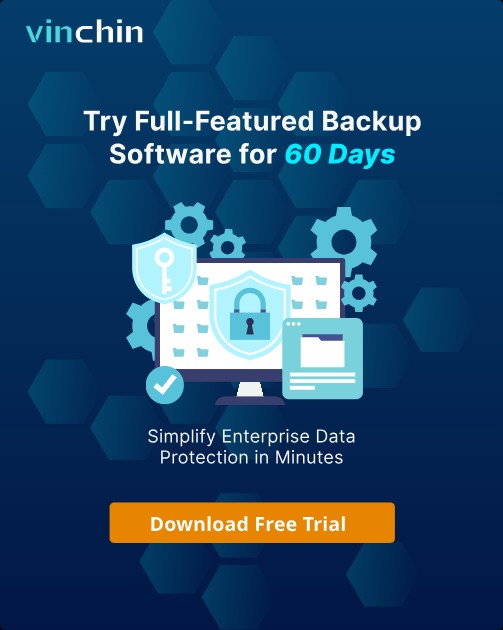-
What Is the Saved State in Hyper-V?
-
Why Is My Hyper-V VM Failing to Start?
-
What Happens When You Delete Saved State in Hyper-V?
-
How To Fix a Hyper-V VM That's Stuck in Saved State?
-
Protect Your Hyper-V Virtual Machines With Vinchin
-
Hyper‑V Saved State Cannot Start FAQs
-
Conclusion
When a Hyper-V VM refuses to start because it’s stuck in a "Saved State," your work can grind to a halt. This problem is common among IT administrators—especially after host reboots or during disaster recovery. In this guide, we’ll explain what a saved state is in Hyper-V, why your VM might fail to start from it, what happens if you delete that state, and how to fix a stuck VM step by step. We’ll also cover advanced troubleshooting for complex environments and share best practices so you can avoid this headache in the future.
What Is the Saved State in Hyper-V?
A saved state in Hyper-V captures everything about your running VM at one moment—its memory contents and device status—so you can pause work and resume later without losing progress. When you place a VM into saved state mode, Hyper-V writes two key files into its folder: .bin for memory data and .vsv for device context.
These files together let Hyper-V freeze your VM’s activity safely. The .bin file holds an exact copy of what was stored in RAM when you paused or shut down the VM using Save instead of Turn Off or Shut Down. The .vsv file records details like CPU registers and network adapter buffers.
Why does this matter? If you need to reboot your host server or perform maintenance but want VMs to pick up where they left off—not just restart—you rely on these files. Some backup tools also trigger saved states so they can capture consistent snapshots without shutting down guest operating systems.
It’s important not to confuse saved states with checkpoints (snapshots). Checkpoints include disk changes; saved states only preserve volatile memory data.
Why Is My Hyper-V VM Failing to Start?
When your VM gets stuck trying to restore from a saved state—and won’t boot—the error message often says something like
"Failed to restore virtual machine state" or
"The virtual machine is not compatible with physical computer."
This issue signals that something broke between saving and restoring that memory snapshot. Let’s break down possible causes:
First, corrupted .bin or .vsv files will prevent resuming because critical information is missing or unreadable. Hardware changes are another culprit: if you move a VM between hosts with different CPUs or change hardware settings (like adding/removing network adapters), the old memory image may no longer match new hardware expectations.
Resource shortages are common too—a host lacking enough free RAM or disk space simply cannot load large memory dumps back into operation. Storage problems such as disconnected drives or changed drive letters mean Hyper-V cannot find those vital files at all.
Permissions matter as well: if Windows security settings block access to any part of the VM folder—including after antivirus scans have locked files—you’ll see errors about denied access.
Finally, interrupted backup jobs sometimes leave VMs stranded mid-process in an unusable state.
For clustered environments using shared storage (Cluster Shared Volumes), additional complexity arises: live migrations between nodes may cause version mismatches if hosts run different builds of Windows Server or have diverging patch levels.
Sometimes even deleting the saved state doesn’t help if there are deeper configuration issues underneath—such as incompatible firmware types (Generation 1 vs Generation 2 VMs) or mismatched integration services versions across hosts.
What Happens When You Delete Saved State in Hyper-V?
Deleting a saved state removes both .bin and .vsv files from your VM’s folder. This action forces your virtual machine to start fresh—as though someone had pulled its power cord rather than letting it shut down gracefully.
What does this mean for data? Any unsaved work held only in RAM disappears forever; however, anything written onto virtual disks remains safe since those aren’t touched by deleting memory images alone.
This approach often resolves incompatibility problems caused by corrupt states—but always make sure you have backups before removing these files on production systems! Deleting them is usually safe but irreversible regarding unsaved application data inside guest OSes.
If you’re running clustered hosts using Cluster Shared Volumes (CSV), be aware that deleting saved states while other nodes still reference them could cause further synchronization issues unless handled carefully through Failover Cluster Manager.
How To Fix a Hyper-V VM That's Stuck in Saved State?
Let’s walk through solutions from simple fixes up through advanced recovery methods suitable for enterprise setups—even clusters. Each method starts with an overview before diving into steps so you know why each works before trying it out yourself.
Method 1. Delete Saved State Using Hyper-V Manager
Most admins begin here because it’s quick—and often effective—for clearing minor glitches related to corrupted save files.
Start by opening Hyper-V Manager, then select your problematic VM from the list on the left pane. In the right pane under Actions, click Delete Saved State; confirm when prompted. Now try starting your VM again using Start under Actions—it should boot cleanly as if powered off previously.
Method 2. Check Host Resources & Storage Availability
If deleting didn’t help—or isn’t available—your next step should be checking whether resource shortages are blocking startup attempts.
First ensure there’s enough free RAM on your host server; open Task Manager, switch to Performance, then review available memory while all other workloads run normally.
Next verify disk space: open File Explorer, right-click system drive(s), choose Properties, then check free space values against expected needs for large VMs.
If storing VMs on external drives or SANs/NAS devices mapped via drive letters, double-check those mappings haven’t changed since last successful boot; mismatched paths will break restoration attempts.
For clustered deployments using CSVs ensure all nodes see identical storage paths via Failover Cluster Manager—otherwise migration-related failures may occur.
Method 3. Fix Permissions on Virtual Machine Files
Access denied errors usually point toward broken NTFS permissions within your VM folders—often after manual moves/copies outside supported tools.
Ensure account named NT VIRTUAL MACHINE\<GUID> has Full Control over all contained items (.vhdx, .bin, *.vsv). If missing:
1. Click Add
2. Enter object name exactly
3. Grant Full Control
4. Apply recursively
Alternatively launch Command Prompt as Administrator (not PowerShell) then run:
icacls.exe "C:\Path\To\VM\{VM-GUID}.bin" /grant "NT VIRTUAL MACHINE\{VM-GUID}":(F)
icacls.exe "C:\Path\To\VM\{VM-GUID}.vsv" /grant "NT VIRTUAL MACHINE\{VM-GUID}":(F)If permission inheritance seems broken entirely use /reset flag:
icacls.exe "C:\Path\To\VM\" /reset /T
Always double-check results by attempting access again through File Explorer before retrying startup.
Method 4. Manually Delete Saved State Files
Sometimes neither GUI nor permissions fixes resolve things—in which case direct deletion becomes necessary.
Before proceeding:
1) Confirm no active backups/checkpoints exist
2) Use Resource Monitor (resmon.exe) > CPU tab > Associated Handles search bar; enter part of filename (.bin, .vsv) ensuring nothing locks target files
3) If locked stop relevant process/service first
Now:
1) Shut down affected VM fully if possible
2) Open Services console (services.msc)
3) Locate service named Hyper-V Virtual Machine Management
4) Right-click > select Stop
5) Navigate again into C:\ProgramData\Microsoft\Windows\Hyper-V\Virtual Machines
6) Delete both .bin & .vsv matching stuck instance GUID
7) Restart management service via same console (Start)
8) Try starting affected VM once more
Method 5: Upgrade Virtual Machine Configuration Version
Older VMs created under previous Windows Server releases may store save-state formats incompatible with newer hosts after upgrades/migrations—a frequent pain point during infrastructure refresh cycles.
In such cases:
1) Ensure target VM is fully shut down—not just paused/saved!
2) Open Hyper-V Manager
3) Select desired instance
4) Under Actions pane click Upgrade Configuration Version
5) Confirm upgrade when prompted
Afterward attempt normal startup again; most compatibility issues vanish once metadata matches current platform standards.
Method 6: Troubleshoot Network Adapter Conflicts & Host Compatibility
Errors mentioning incompatibility often stem from network adapter misconfigurations following migrations between hosts—or renaming/removal of associated virtual switches.
Open Virtual Network Manager within Hyper-V Manager interface; confirm every adapter attached matches valid switch names present locally on new host node(s).
If needed:
Rename switches back so names align across source/destination servers
Reassign adapters directly within each affected guest's Settings dialog
For advanced users: check MAC address uniqueness across all adapters using PowerShell:
Get-VMNetworkAdapter -All | Select Name,MacAddress
Duplicate MACs can cause subtle connectivity failures especially after importing/exporting multiple guests simultaneously.
Method 7: Export & Re-import Virtual Machine Configuration
If rebuilding feels too disruptive but corruption persists at config level try exporting/importing metadata instead:
1) Launch elevated PowerShell window
2) Run Export-VM -Name "<Your_VM_Name>" -Path "<Export_Directory>"
3) Remove original instance from inventory (do not delete disks!)
4) Import back using Import-VM -Path "<Export_Directory>\<Config_File>.xml"
5) Attach existing disks during import wizard prompts
This process refreshes internal references without touching user data inside attached volumes.
Method 8: Rebuild Virtual Machine Using Existing Disks (Last Resort)
As final measure document all current settings first—including assigned CPUs/RAM/network layout—from original configuration screens within manager toolset.
Delete failed instance outright (do NOT remove .vhdx/.avhdx disks!)
Create brand-new guest matching prior specs
During wizard select option labeled "Use an existing virtual hard disk" pointing directly at preserved storage file(s)
Boot up new instance—it should behave identically except now runs atop clean metadata/configuration layer.
Protect Your Hyper-V Virtual Machines With Vinchin
To further safeguard against unexpected downtime caused by issues like “saved state cannot start,” consider implementing robust backup protection for your environment. Vinchin stands out as an enterprise-level solution designed specifically for professional virtual machine backup across more than 15 mainstream platforms—including full support for Microsoft Hyper‑V alongside VMware, Proxmox VE, oVirt, OLVM, RHV, XCP-ng, XenServer, OpenStack, ZStack and others.
Vinchin delivers comprehensive features such as forever-incremental backup (minimizing storage usage), built-in deduplication and compression (optimizing performance), seamless cross-platform V2V migration capabilities, scheduled/repetitive backups for automation peace-of-mind—and much more.
With Vinchin's intuitive web console backing up a Hyper‑V VM takes just four steps:
1. Select the specific Hyper‑V machine from inventory;
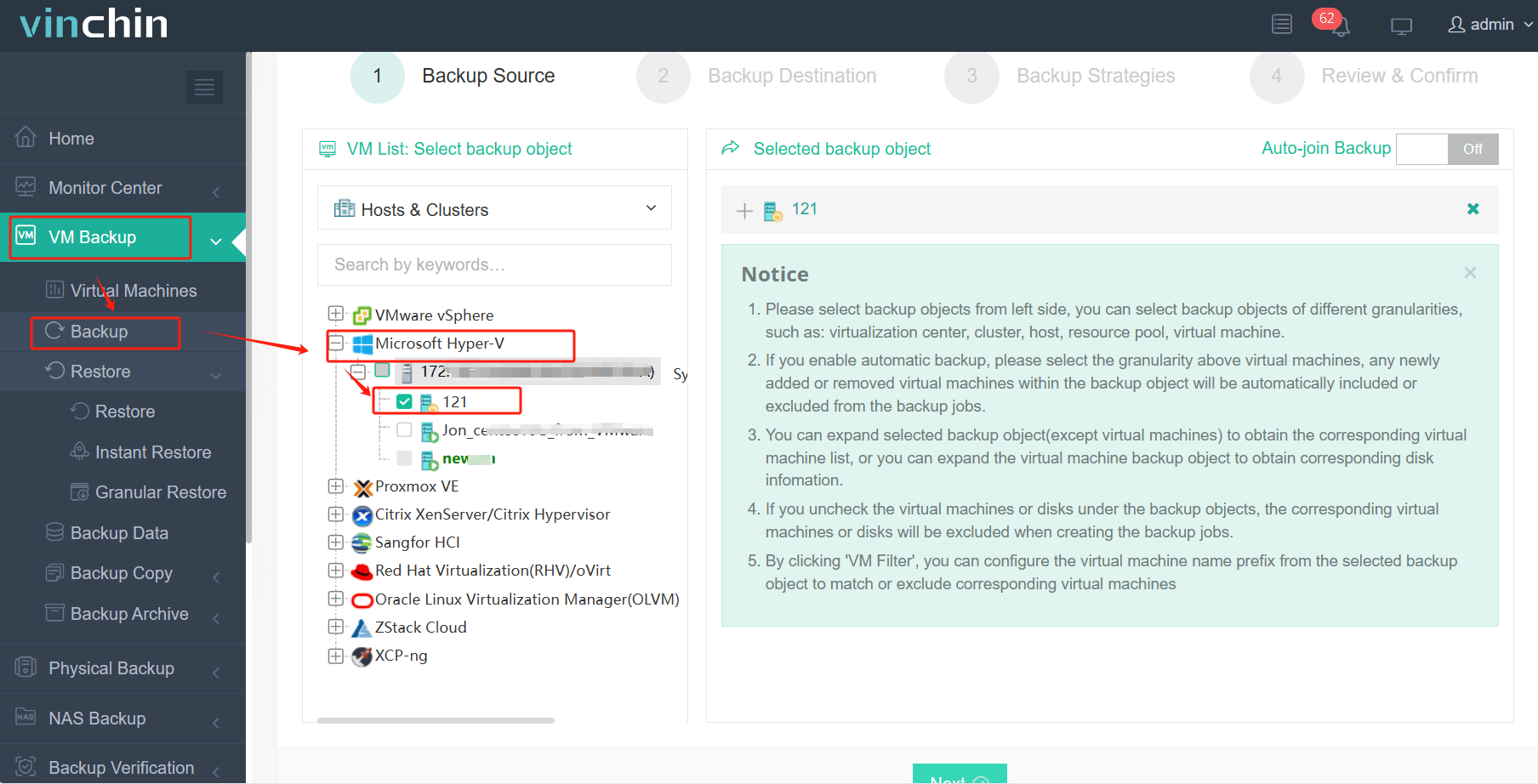
2. Choose where backups will be stored;
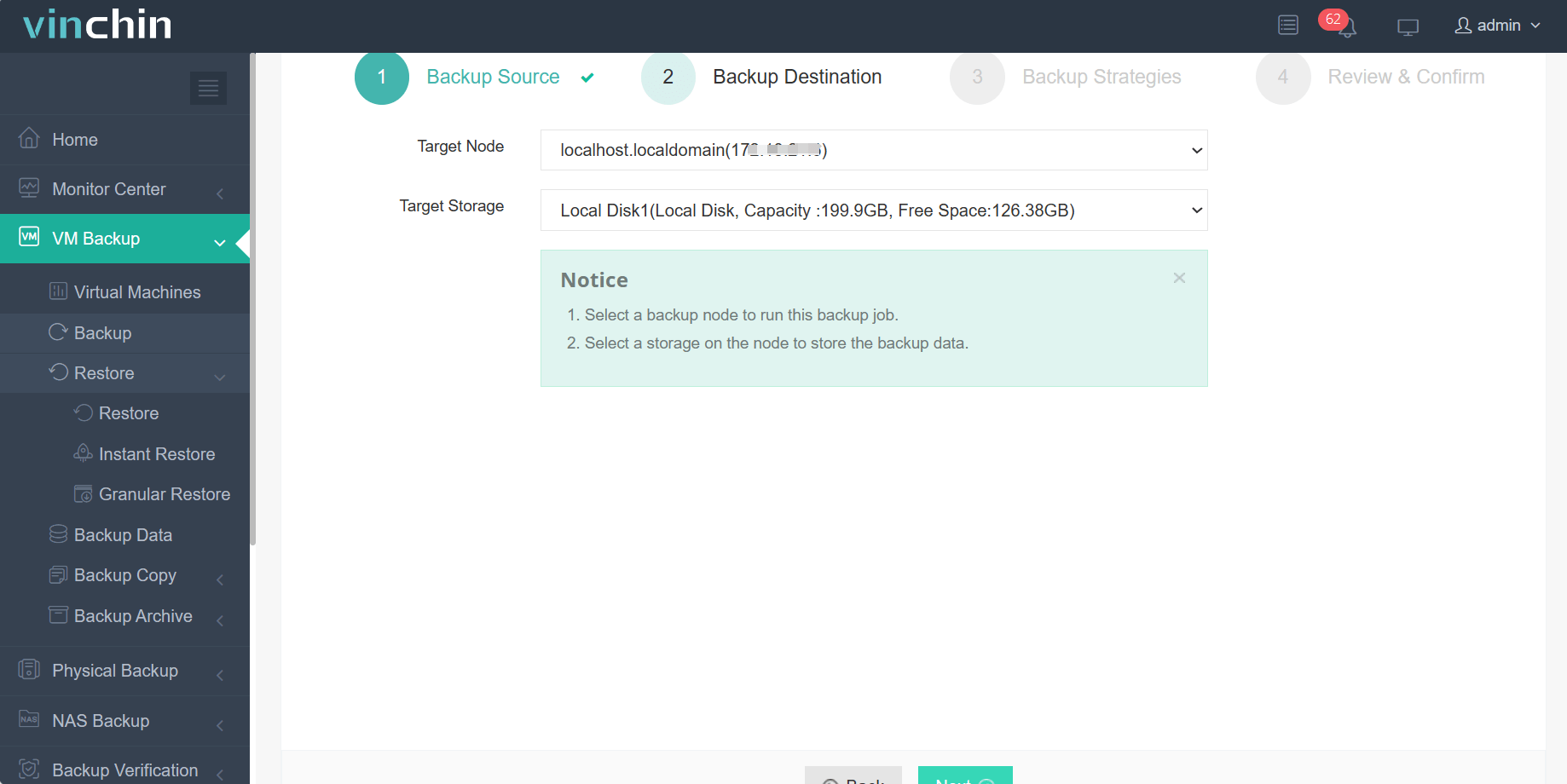
3. Configure strategies like scheduling/deduplication/encryption per policy needs;
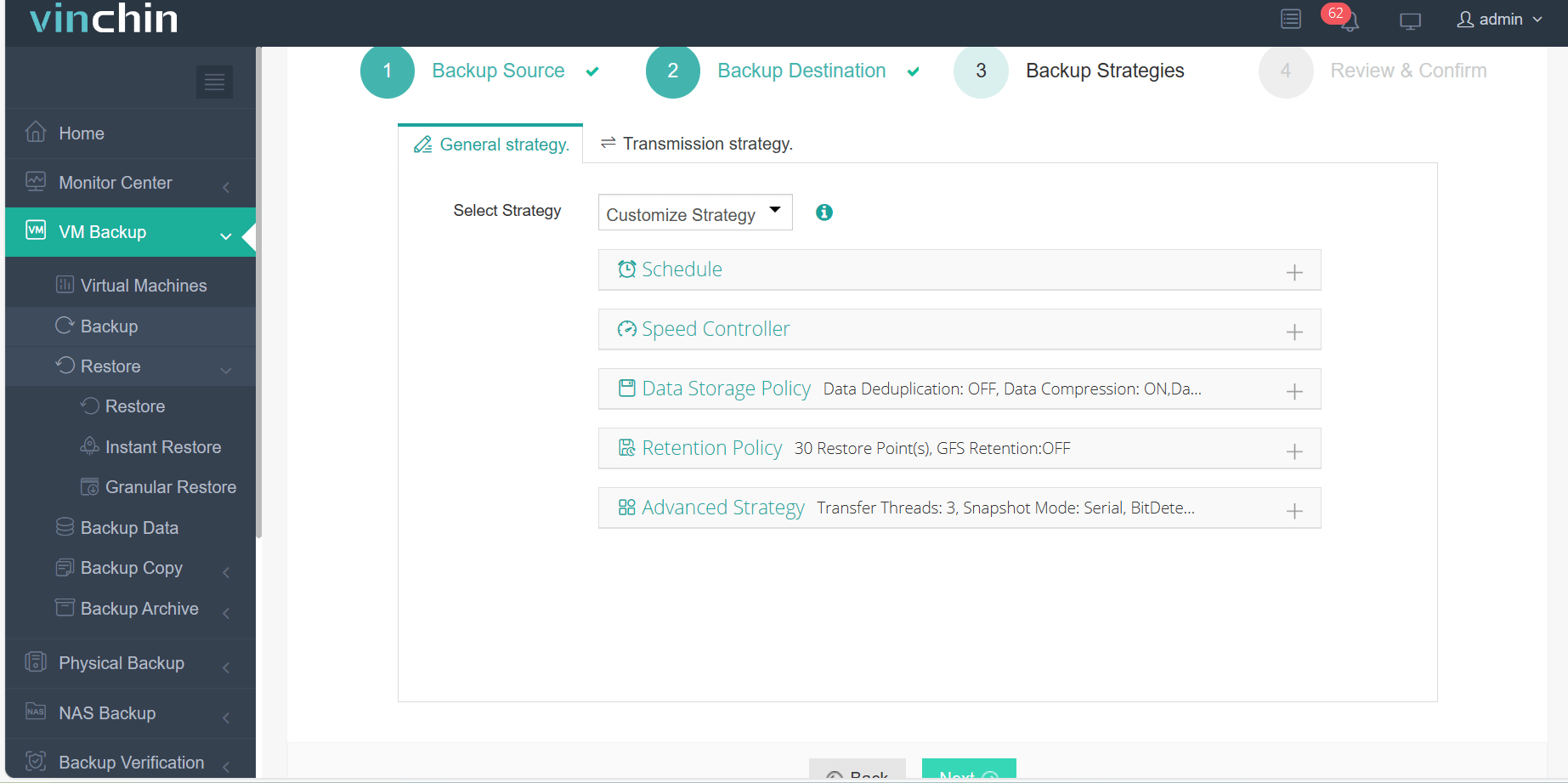
4. Submit the job.
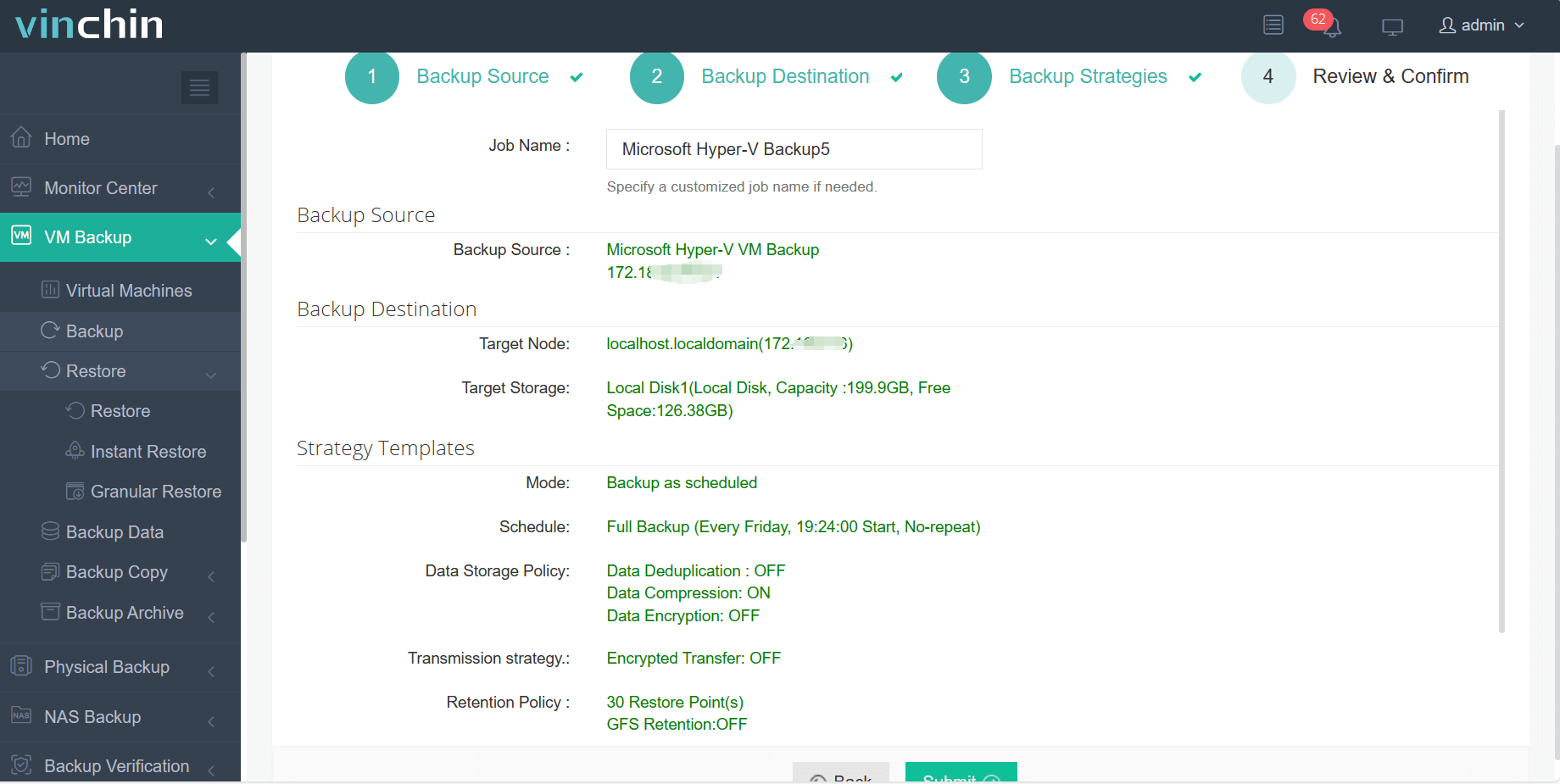
Trusted globally by thousands of organizations—with consistently high ratings—Vinchin offers a risk-free way to experience its full power through a complimentary 60-day trial license covering every feature set available.
Hyper‑V Saved State Cannot Start FAQs
Q1: Can updating my Windows Server cause my running VMs' saved states not to start?
A1: Yes—a major update may change underlying components making old save-states incompatible until deleted manually or upgraded properly.
Q2: How do I quickly check which process locks my .bin/.vsv file?
A2: Open Resource Monitor > CPU tab > type part of filename under Associated Handles column > identify locking process/service instantly!
Q3: What should I do if my cluster node fails during live migration leaving several VMs stuck?
A3: Use Failover Cluster Manager > move role ownership away temporarily > clear/save-state manually per affected guest before returning workload ownership back.
Conclusion
A stuck “saved state” can disrupt business—but careful troubleshooting gets most VMs running again fast while avoiding unnecessary rebuilds.Regular backups remain essential.Vinchin makes protecting even complex multi-host environments simple,reliable,and efficient.Try Vinchin today—and keep downtime at bay!
Share on:





